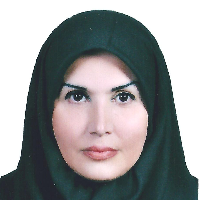etermining the Effects of the Components of Visual Structure Quality on the Receptibility of Sociopetal Environments (Research Subject: Isfahan’s Historical Bazaar Saria)
Preface and Purpose of the Study:
Understanding the visual structure of historical bazaar saria, as one of the most important architectural elements of design, can be effective for contemplation of their role and latent potential in the quality of their sociopetal spaces, the extent of their receptibility, and their prosperity. This study focuses on the understanding and analysis of principles of sociopetality in the receptibility and the visual quality evaluation of bazaar sariaes.
Firstly, through correlation and regression analysis, the presence of a students for each of the 12 investigated sariaes, and recording of the number of people and their gathering places, steps were taken to assess the criteria and answer the theories and research questions of the study. The evaluation and determination of the scope of the study were achieved through visual quality and sociopetal concepts in a structural dimension derived from the framework of the research and its conformity with visual parameters defined by space syntax software. The space syntax data was analyzed using the Depthmap software.
Based on the findings of the study, it can be argued that access points and routes to the sariaes (whether directly or at a rotating angle), dimensions and total measurement of the saria and central courtyard, number of primary spaces, and direct access to primary spaces affect the extent of sociopetality and receptibility of bazaar sariaes. Furthermore, halls that have more entry points, larger central courtyards, and lesser rotation angle for accessing their middle saria, are more inviting and receptible and are more sociopetal as a result. In some cases, such as Mirza Kuchak saria, Khansari saria, and Golshan saria, visual quality components have a reverse correlation with structural components because entry points with an indirect view of the saria have no bearings on visual qualities, having high visual quality yet lower sociopetality.
The findings of this study reveal that although, in most cases, visual quality components affect structural factors and induce sociopetality in the environment, in most bazaar sariaes in Iran such a correlation does not always exist. Sariaes with higher visual quality have lesser sociopetality because, in terms of structure, they do not have intelligible and inviting environments that appeal to the public. Sight and appearance, spatial complexity, practical variety, access and degree of movement, and comfort and number of available facilities affect the spatial quality and thus sociopetality.
- حق عضویت دریافتی صرف حمایت از نشریات عضو و نگهداری، تکمیل و توسعه مگیران میشود.
- پرداخت حق اشتراک و دانلود مقالات اجازه بازنشر آن در سایر رسانههای چاپی و دیجیتال را به کاربر نمیدهد.



